












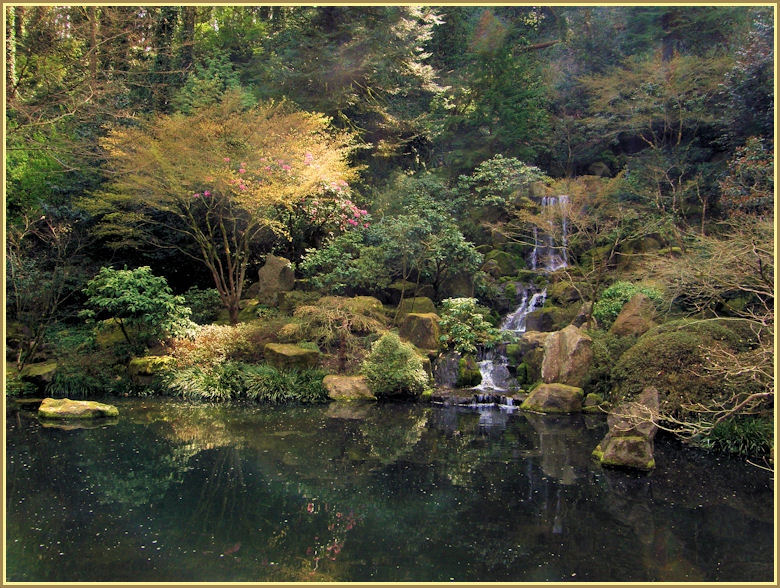




More of Don's
photo series.
Presidents' Places: Thomas Jefferson
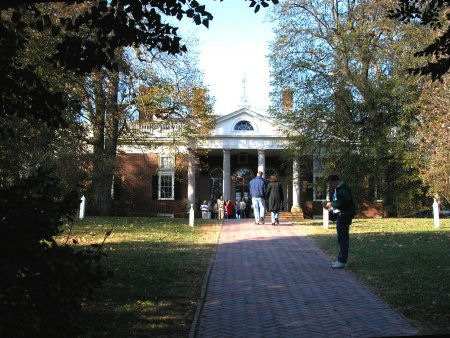

A strange thing about Thomas Jefferson's Monticello is that it looks small until you get right up to it, then it looks huge.
Tom was born not too far from here, and spent most of his life in this area of central Virginia, which at that time was on the frontier. As a boy, he decided this mountaintop would be his home.

Tom built Monticello for his own comfort. He designed it just to suit himself. For instance, his bed was built into the wall between his study and the living room. He could get up on whichever side of the bed he wanted to. And the stairs to the upper floors were narrow and steep.

The house is rather oddly shaped, if you include the work areas; kind of like an "E", with the main house being the middle bar of the "E." The upper and lower bar were work areas -- kitchen, laundry room, office, etc. These parts are only one story high, with a walkway on top -- one leading to the caretaker's office, and one to the "Honeymoon Cottage."
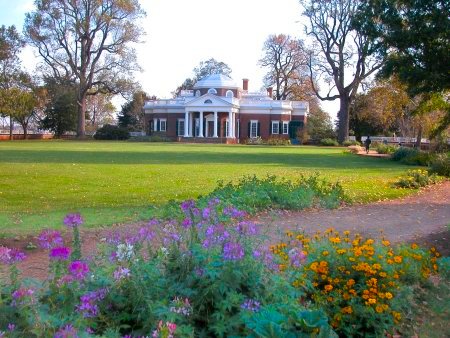
The West Front, with the flower-lined walkway around the large lawn. When Tom mentioned in his diary or his letters that he had planted so-and-so, or that he had built this or that, what he meant was that his slaves had planted so-and-so or built this or that. He never did any manual labor himself.
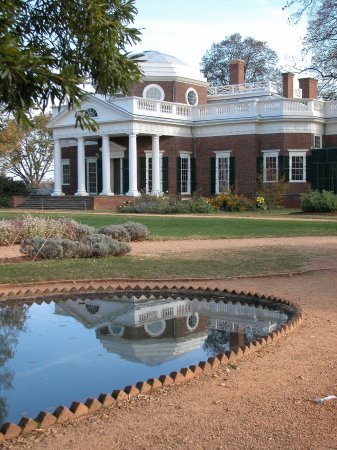
I was intrigued by this fish pond. Tom's slaves would go fishing in the creeks nearby, and transplant the fish they caught to the fish pond so the master and his family and guests could enjoy fresh fish regularly.

This is one of the walkways I mentioned above. This one leads to the Honeymoon Cottage; under the walkways are work areas -- kitchen, offices, etc.
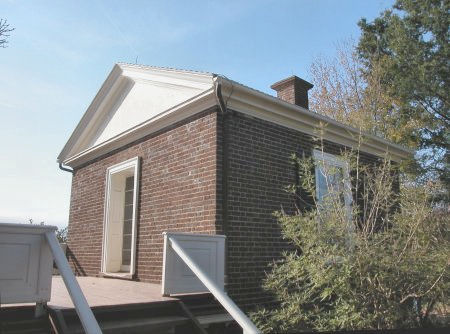
This is the oldest building at Monticello. Tom brought his new bride, Martha Wayles Skelton, here on stormy New Years night, 1772; they lived here until larger quarters were constructed.

The mutually adoring couple spent many happy hours and days in this little cottage. Martha was never in good health, although she was a beautiful, vivacious lady. She endured at least six pregnancies; all but one resulted in daughters. Their son died as a tiny infant. Martha died ten years after her marriage to Tom, leaving him with two daughters, Patty and Molly. Molly died as a young woman; Patty, however, lived into old age.
As Martha was dying, she made Tom promise to never marry again. He took his promise seriously, and never married again. However, he has been accused of maintaining a love life with his slave Sally Hemmings for many, many years. He was also accused of dilly-dallying with Dolley Madison, who served as his "First Lady" part of the time Tom was president. Almost certainly, neither of these relationships took place.
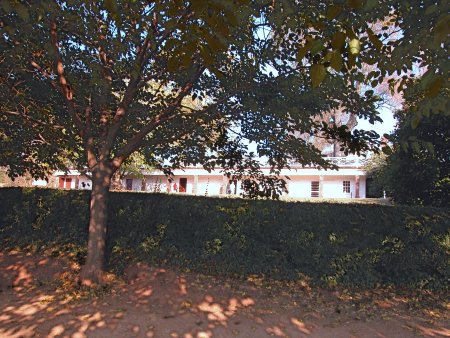
Here is a view of one of the walkways mentioned above. You can see the railing at the top of the white structure. The kitchen, laundry room, offices, etc., were here.

Mulberry Row had a series of buildings -- offices, slave quarters, foundry, etc., all of which are gone now, except for some of the foundations, and one chimney is still standing.
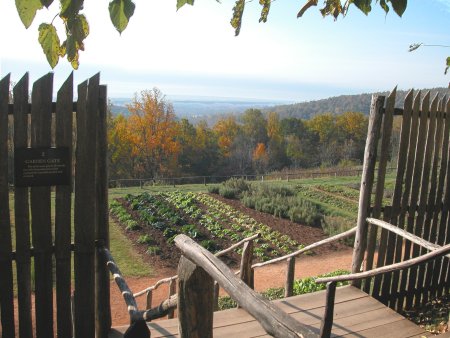
And here is one of several gardens at Monticello. Tom thought of himself as a farmer; at least that's what he wanted people to think of him as. And he was -- a gentleman farmer. The main cash crop was tobacco, but they also grew most of their own food. Once when he was in Europe, he acquired some rice seed. It was not supposed to be taken out of Italy, but Tom smuggled a few pounds of it in his pockets. From those seeds he grew new strains of rice to be grown in the United States.
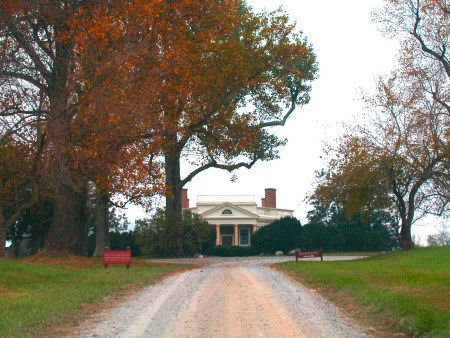
Tom had lots of friends, some of whom would come to Monticello and stay on for days or weeks. He grew tired of all the company, but couldn't bring himself to tell them to buzz off. So he built Poplar Forest, his retreat in what is now suburban Lynchburg, 65 miles or so south of Monticello, so he could get away to himself.

Tom designed his Poplar Forest getaway himself, of course. It is octagonal, with one large room in the middle, with several smaller rooms on the perifery, and a long row of offices on a wing.

Clever design, I guess. It is in the process of being restored, which is taking years.
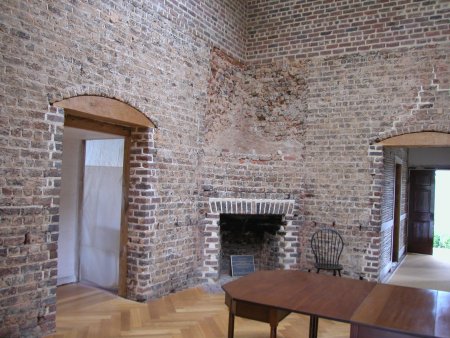
This is the central room --also octagonal. There are only a few artifacts on display. . .

. . . one of which is one of Tom's pantographs, with which he could make a simultaneous copy of whatever he was writing.
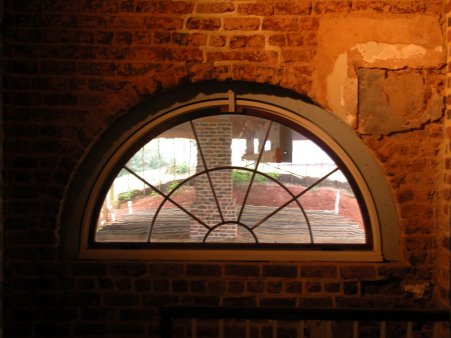
This window looks out on the main office. You can see the care which Tom put into the architectural work he did. Everything he designed looks just right.

This photo and the next two show the row of offices: exterior, down the breezeway, and one of the rooms.
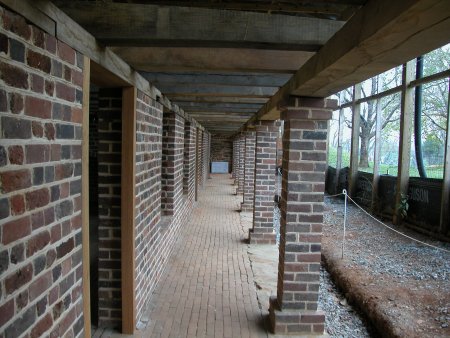
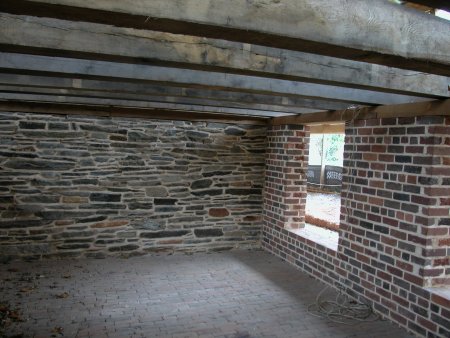
The irregular brick wall is a careful reconstruction of the old wall; all the work being done here is as faithful to the original as possible.
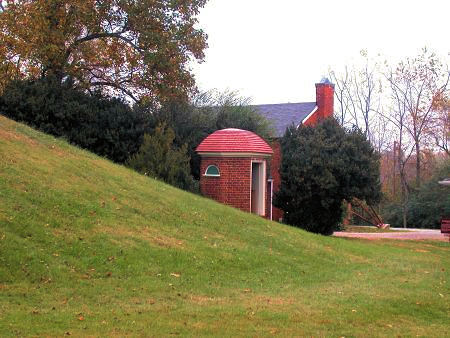
And now, ladies and gentlemen, I present to you the one, the only, the orginal, Thomas Jefferson's own BRICK OUTHOUSE! (Actually there are two, one at each end of the main building.)
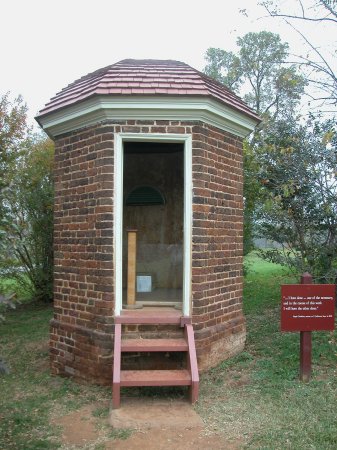
The two outhouses are identical, both octagonal to match the house, both one-holers, although the other one has a child's seat for young visitors.
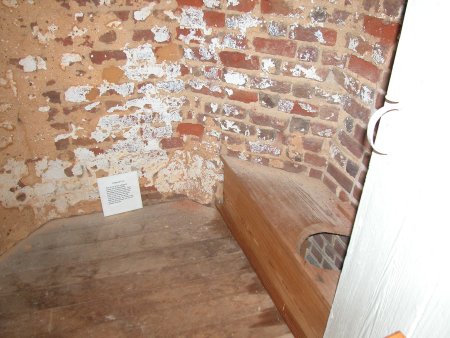
Looking out across the grounds on this fine autumn day, we have much the same view Tom had when he stayed here.

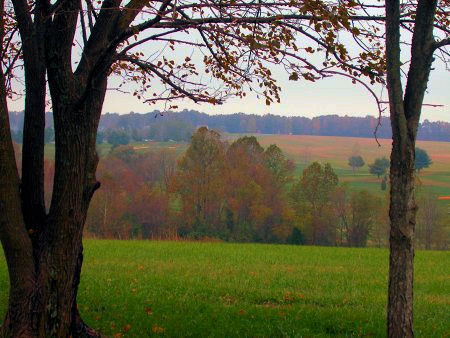

Back to Monticello.
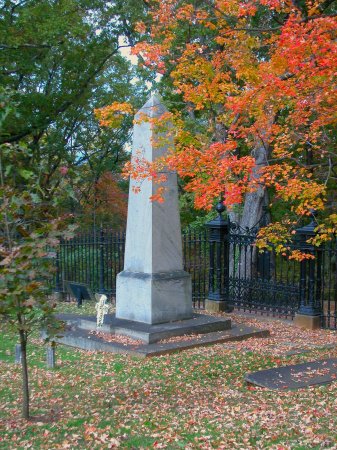
Tom is buried in the family cemetery here at Monticello, on the hilltop he loved.

Tom wrote his own epitaph (before he died, of course); notice that he did not include "President of the United States" as one of the high points of his life, but rather that he was the author of the Declaration of Independence, author of the Virginia Statute of Religious Freedom, and founder of the University of Virginia. The man had his priorities right.
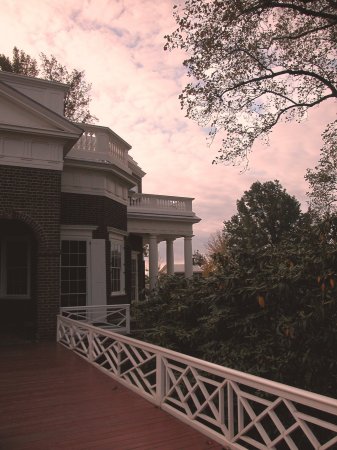
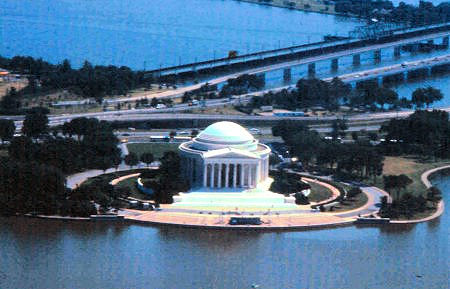
The Jefferson Memorial, in Washington, D.C., was built in the 1930s in tribute to our third president. This photo is from the top of the Washington Monument.
Comments.
All photos on this site ©Donald L. Mark 1973-2007 Back to "Presidents' Places" Index